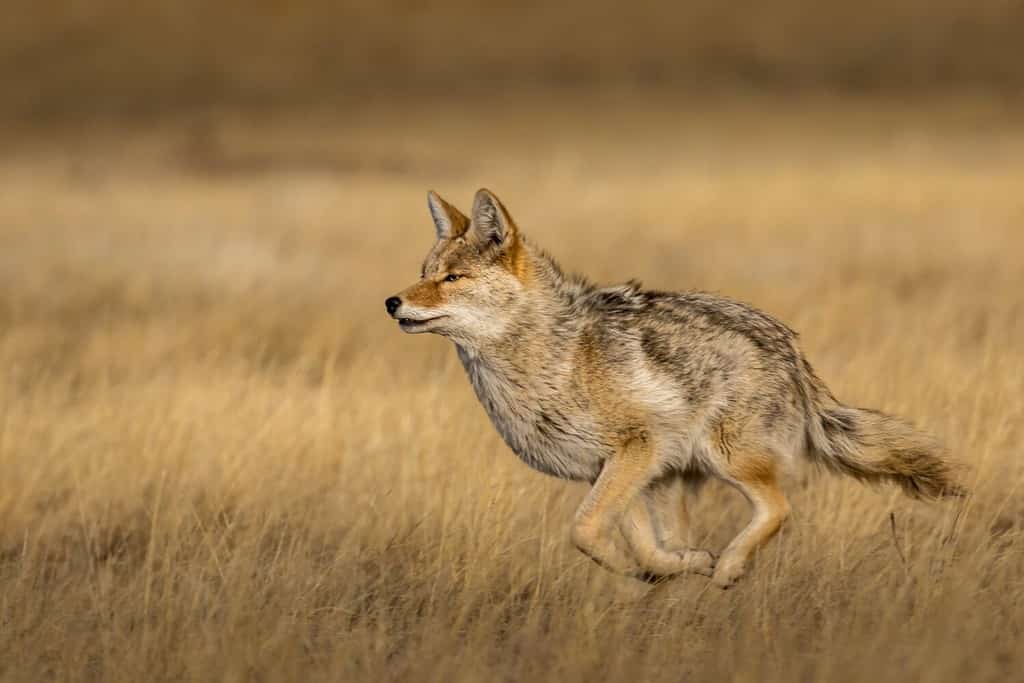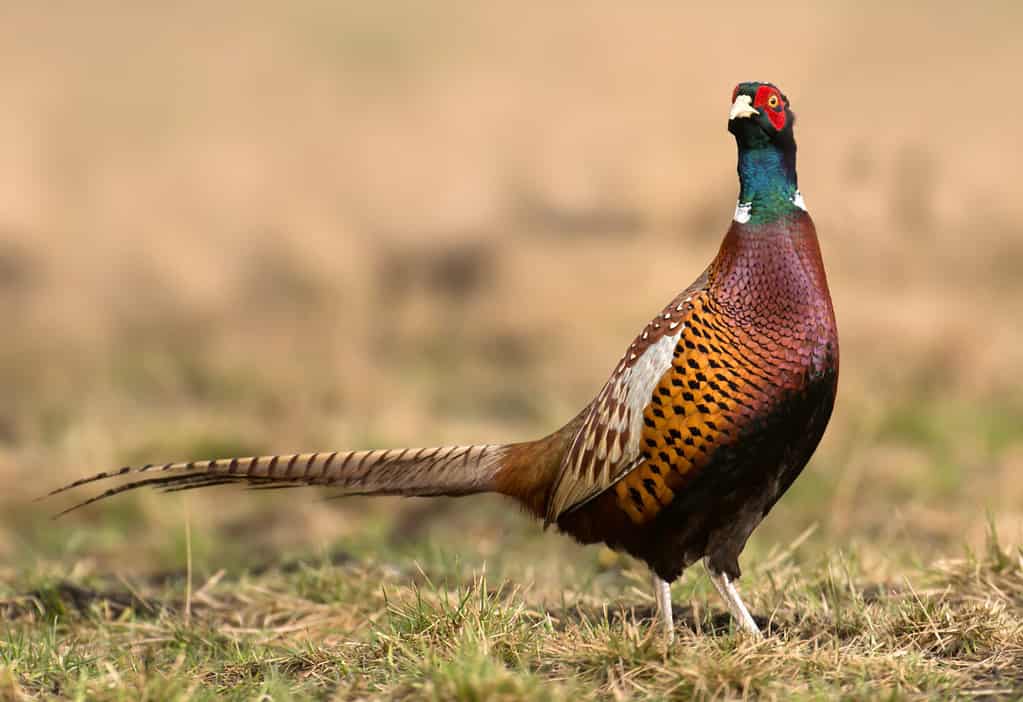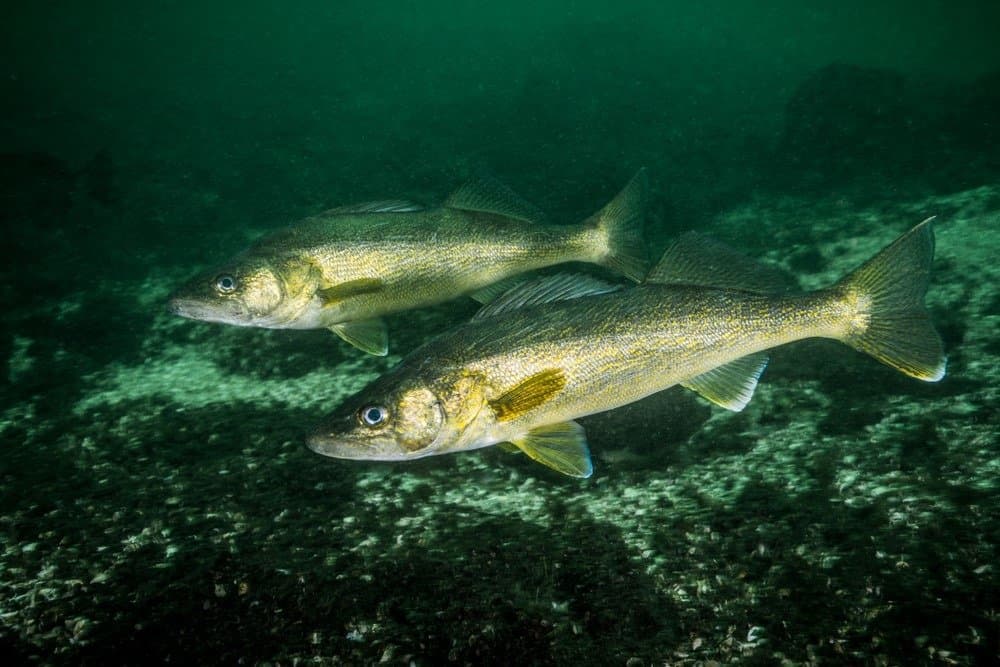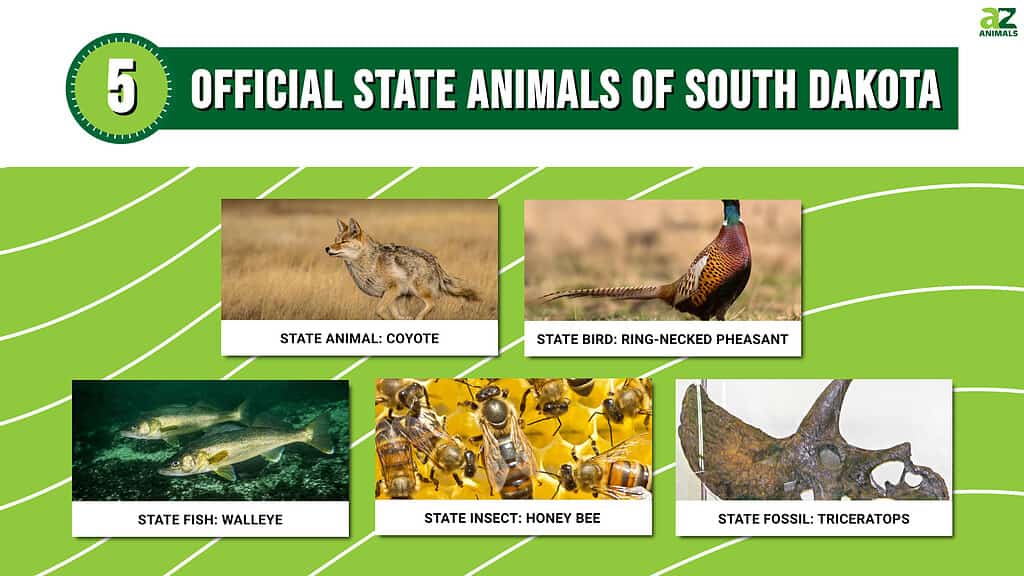Like every other state, South Dakota has named several official state symbols. Among these are five different animals, each with their own unique ties to The Mount Rushmore State. Read on to meet the official state animals of South Dakota!
State Animal: Coyote (Canis latrans)

Coyotes have proven themselves readily adaptable to human development and continue to expand their range across North America.
©Dennis Laughlin/Shutterstock.com
South Dakota named the coyote its official state animal in 1949. This highly adaptable canine predator is found across the state in a variety of habitats, though they are most at home in open prairies and grasslands. Their largest populations in the state occur in the Missouri River basin and the Black Hills.
State Bird: Ring-Neck Pheasant (Phasianus colchicus)

Ring-necked pheasants are both ground feeders and ground nesters.
©Piotr Krzeslak/Shutterstock.com
South Dakota named the ring-necked pheasant the official state bird in 1943. These popular game birds are originally native to Asia but have been widely introduced across both Europe and the United States. They were first introduced to South Dakota in 1908 into Spink County by A.E. Cooper and E.L. Ebbert.
State Fish: Walleye (Stizostedion vitreum)

Walleyes are predatory fish, eating mostly smaller fish as well as crayfish and other freshwater invertebrates.
©RLS Photo/Shutterstock.com
The walleye was named the official state fish of South Dakota in 1982. They occur statewide in large streams, rivers, lakes, and reservoirs and are most common in the Missouri River system and the glacial lakes area in the northeast. They are popular with anglers and are fished across the region both recreationally and commercially.
State Insect: Honey Bee (Apis mellifera)

The honey bee is originally native to Afro-Eurasia but can now be found worldwide thanks to human introductions.
©iStock.com/Inventori
South Dakota named the honey bee its official state insect in 1978. South Dakota is one of the nation’s top honey exporters, producing a desirable mild, clear clover honey. Honey bees are also important pollinators for the state’s agricultural industry.
State Fossil: Triceratops

The name triceratops is from the ancient Greek and translates to “three-horned face.”
©James St. John via Flickr / CC BY 2.0 – License
Last but certainly not least, South Dakota named the triceratops its state fossil in 1988. Specifically, it is the Triceratops horridus skull discovered in the Hell Creek Formation in 1927 that is designated as the official state fossil. The skull is currently on display at the South Dakota School of Mines Museum of Geology in Rapid City, South Dakota, as seen in the photo above. Triceratops were ceratopsian dinosaurs that lived during the Late Cretaceous period, about 68 to 66 million years ago.

The photo featured at the top of this post is © iStock.com/passion4nature
Thank you for reading! Have some feedback for us? Contact the AZ Animals editorial team.






